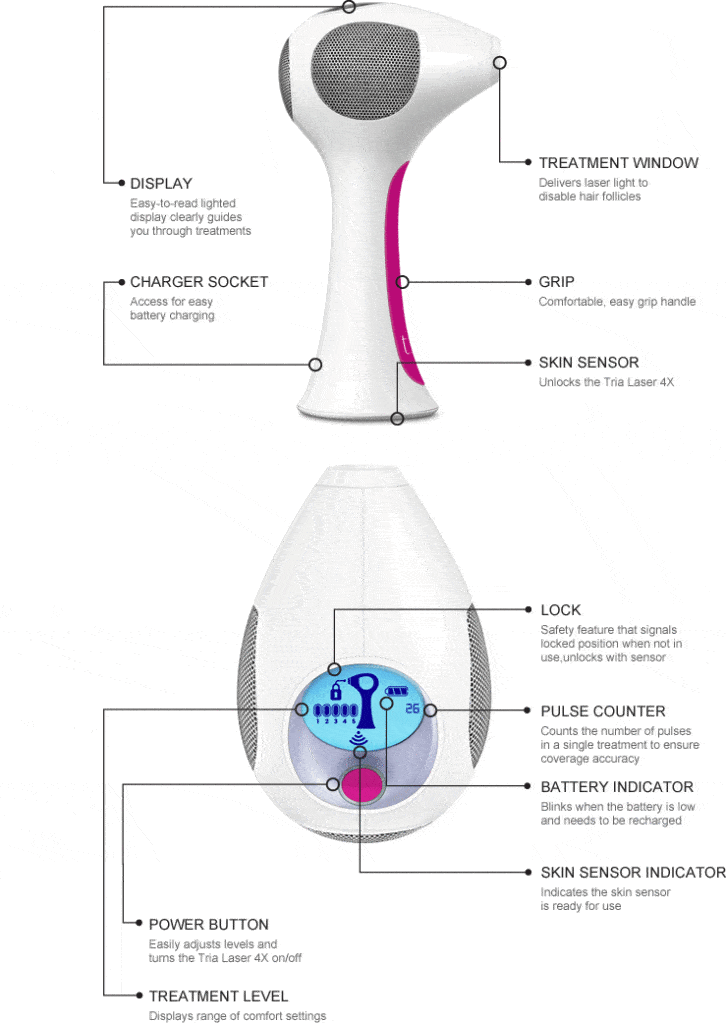
Laser hair removal has become a well known method for long term hair removal. If you have ever been curious about it, today I am here to tell you all about it.
The guide below will explain everything, from how laser hair removal works, to how painful the treatment will be for you, to the potential negatives of laser hair removal.
As someone who has gone through the process myself, I have firsthand experience. I want you to fully understand the process and what it can do for you. Let’s get into it!
Table of Contents
Permanent Hair Reduction: Laser Hair Removal
Laser hair removal works by sending the energy from the laser through the hairs to damage the hair follicle. The lasers are attracted to pigmentation, which is why it cannot be performed on all people.
When considering laser hair removal you need to take a look at your own skin and hair colors: People with very deep complexions or people with blonde, grey, or white hairs will not be able to have laser hair removal. Because the lasers are attracted to pigmentation if the skin is too dark or there is too little pigment in the hair the laser energy will stay on the surface of the skin rather than traveling down the hair to the follicle. This energy can burn your skin so these are not concerns to take lightly!
That being said, if you are able to have laser hair removal there are some things that you should know. While often marketed as a permanent hair removal process it actually is approved by the FDA only as a permanent hair reduction process. The only permanent hair removal process that is FDA approved is electrolysis which I will talk about in my next post on permanent hair removal. Laser is great for major reduction of hair as well as for thinning coarser hairs, but it is common to go back for touch ups every few years.
Unfortunately, the field of laser hair removal is not well regulated so you want to really be doing your research on where you go for treatments. No matter where you go, laser hair removal is expensive, and if you find a deal that seems too good to be true it probably is.
It is best to make sure that your laser technician has had sufficient training and understands the process and how it affects you and your body. Check out their reviews as well, if they’ve burned anyone you’ll hear about it there.
Treatment Options
If you are trying laser for the first time…
If you are trying laser for the first time I highly suggest going to a professional. You can try out the treatment to see what the treatment feels like, important factors about your own skin and the technique or your technician.
If you’ve already had laser and want to touch up…
If you are someone who has been through the laser process and wants to work on a small area or touch up previously treated areas you can also try an at home laser. I would only recommend at home treatments if your skin is relatively light with dark hair so that he chances of burning yourself are reduced.
For at home treatments, I recommend the Tria Hair Removal Laser 4x, it is an FDA approved laser hair removal machine.
Before it turns on you must hold the sensor to your skin so that it can check your skin tone. If the skin being treated is too dark the laser will not turn on. This is a great feature to prevent burning the skin.
Also it only shoots a pulse when the entire surface of the laser is covered so there is no risk of blinding anyone either. It is fairly easy to use and is great for small areas. While it is marketed for larger areas as well you may find yourself having to charge the device halfway through a leg.

Expectations vs Reality:
Laser is not a one and done treatment, it can be a long process that you need to be committed to.
Most areas will take around 6 – 8 treatments to get ideal results but they must be done in specific intervals. The specific intervals may vary depending on where you go but it is usual to have appointments spaced 6 weeks apart, this is so that they are able to catch each cycle of hair growth. So that you don’t interrupt the hair growth cycles, you cannot remove any hairs from the root, this means, no waxing or tweezing any of your hairs in the treatment area.
It is easier to do the majority of your treatments in the winter because you cannot get a tan during the laser process. As mentioned before, laser is attracted to pigment so it would be more attracted to your tanner skin.
Laser can yield different levels of pain due to many different factors. The thicker and darker your hair is the more energy will be able to travel down it, causing more damage to your hair follicle and thus hurting more. It also depends on the location being treated: Your bikini area, underarms and face will hurt more than than getting your legs or arms done.
Even being on or near your period can increase how much laser hurts, so try to book your sessions at a different time.
The Treatment
When you go in for your appointment you want to have the treatment area shaved. This is so that the energy goes straight down the hair to the follicle — if there is hair above the skin there is a higher chance of burning the skin.
I would suggest that you wear loose clothing to your treatment as your skin may be a bit sore or swollen after.
You also should not expose the treatment area to excessive heat for 24 hours after the treatment, this includes hot showers and sweating.
As you continue to go for treatments you will see your hair will become thinner and thinner until they stop growing back. Because of the hairs thinning over time, each laser appointment will be less and less painful.
Potential Negatives
There are some possible negatives to laser that you need to be aware of before you begin your treatments.
As I mentioned, there is the possibility of the treatment burning your skin, but if the laser technician knows what they are doing this shouldn’t occur.
There is also the possibility of the laser discoloring the skin, sometimes this is temporary but it can cause permanent pigmentation as well.
Another big potential negative to laser is the possibility of the laser stimulating more hair growth. This mostly affects women from South Asian and Middle Eastern backgrounds when they are treating their facial area. The exact reason for the stimulated hair growth is unknown so it is something to really think about if you belong to this group and were planning to get laser on your facial area.
Have you ever thought about getting laser hair removal? What stopped you? Or convinced you to go for it? Let me know in the comments below!
Laser is a great option for many people. But there is a limited group that can take advantage of the method. Next week I will let you know all about electrolysis which can treat people with any skin tone.
